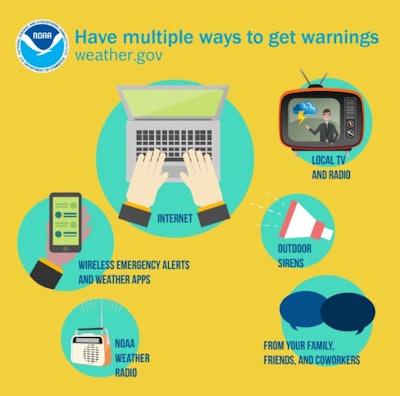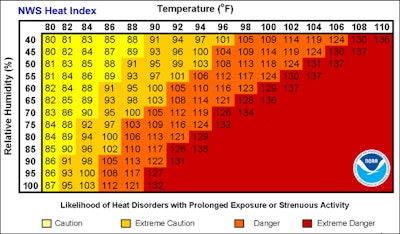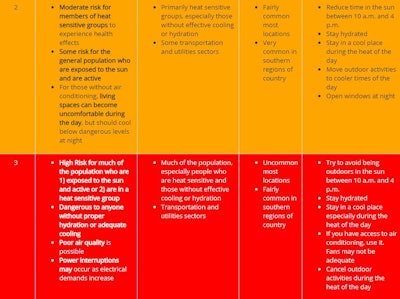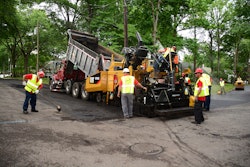
The National Weather Service (NWS) recently shared several tools to help outdoor workers track extreme heat and other dangerous weather conditions. Weather experts recommend checking weather conditions up to 14 days in advance of working outside. For construction workers, that means always staying on top of forecast changes and upcoming heat dangers.
NWS Tips for Staying Safe in the Heat
1. Check the latest forecast at weather.gov. It's easy to lose track of time and miss updates to the forecast. Checking the NWS site frequently can keep workers up-to-date on important changes.
2. Know your heat warnings. Do you know the difference between a heat warning, watch and advisory? This is how the NWS defines those alerts:
- Excessive Heat Warning: Act. An excessive heat warning is issued within 12 to 24 hours of the onset of extremely dangerous heat conditions.
- Excessive Heat Watch: Be prepared. Heat watches are issued when conditions are favorable for excessive heat in the next 24-72 hours.
- Heat Advisory: Use caution. A heat advisory is issued within 12 hours of the onset of dangerous heat conditions
 Heat index values in this chart are for shady locations. If you are exposed to direct sunlight, the heat index value can be increased by up to 15 degrees.National Weather Service
Heat index values in this chart are for shady locations. If you are exposed to direct sunlight, the heat index value can be increased by up to 15 degrees.National Weather Service
3. Understand the heat index. According to the NWS, the heat index describes how the temperature feels to the human body, when relative humidity is combined with the air temperature. In most cases, it is a better measure of heat than air temperature alone.
4. Know the Wet Bulb Globe Temperature. This experimental tool helps monitor expected heat stress. It shows heat stress categories associated with Wet Bulb Globe Temperature (WBGT) forecast values by region. WBGT forecasts one to seven days ahead, making it useful for planning purposes as well as day of action.
5. Track the hazards outlook. The Weather Prediction Center Day 3 - 7 Hazards Outlook shows whether excessive heat or much above-normal temperatures are predicted.
6. Monitor the eight to 14 day outlook. The Climate Prediction Center’s 8 - 14 Day Outlook provides a longer forecast window to help plan for outdoor work and activities.
 The NWS experimental HeatRisk tool provides an overview of heat risk potential during the upcoming seven days.National Weather Service
The NWS experimental HeatRisk tool provides an overview of heat risk potential during the upcoming seven days.National Weather Service
7. Check out the NWS experimental HeatRisk tool. The NWS experimental HeatRisk tool provides an overview of heat risk potential during the upcoming seven days. This tool, available for the western United States, portrays heat risk through a color scale. The color yellow indicates low risk, orange means moderate risk, red is high risk and magenta is very high risk for heat-related injuries.
 NWS definitions and guidelines for orange/moderate risk and red/high risk heat events.National Weather Service
NWS definitions and guidelines for orange/moderate risk and red/high risk heat events.National Weather Service




















